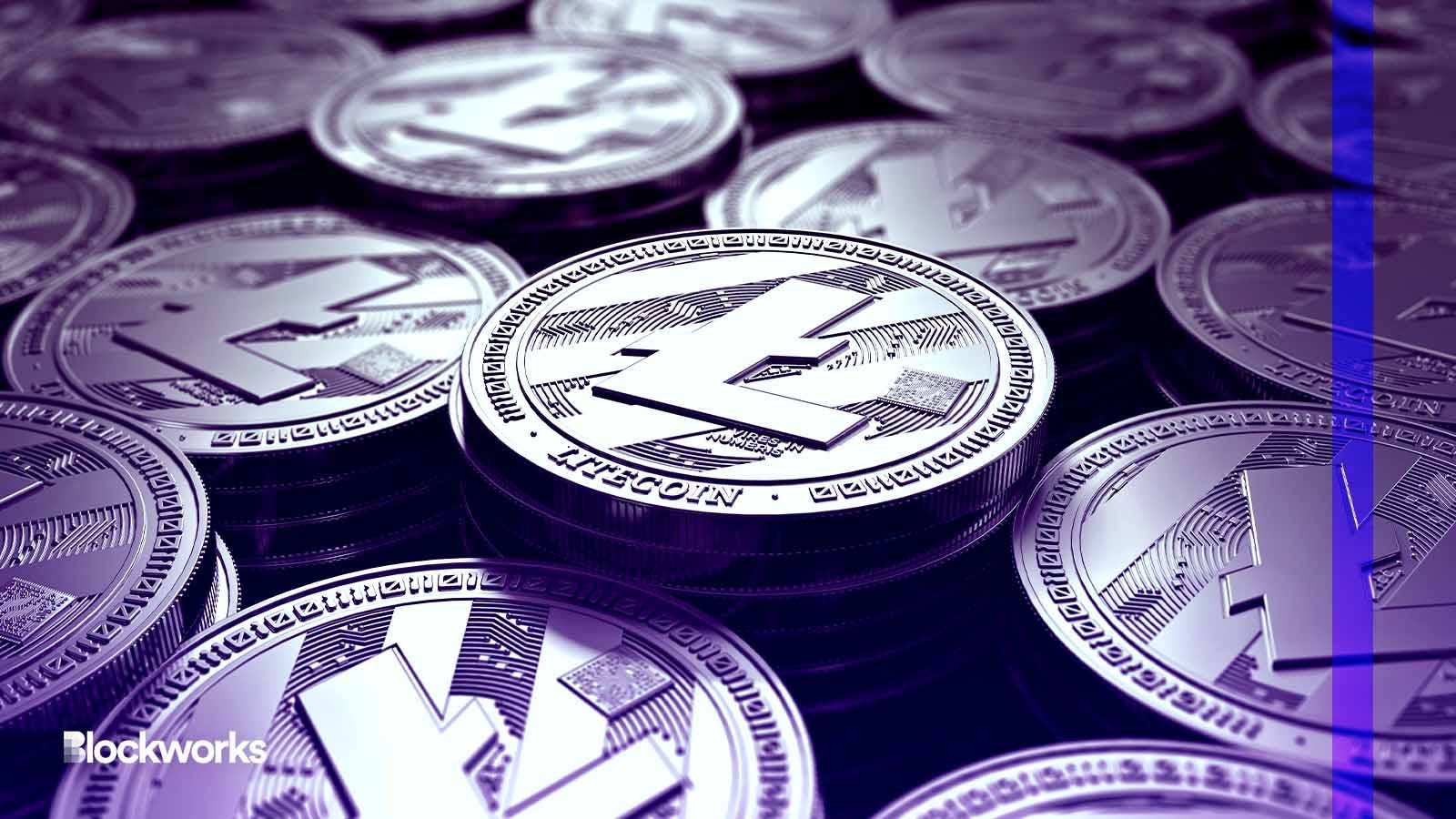The Litecoin halving is hours away: Here’s what to know
The price pump that historically comes as a result of Litecoin halvings already happened this time around, analyst says

Wit Olszewski/Shutterstock modified by Blockworks
Most people in crypto circles know the block rewards for mining bitcoin will be cut in half next year. Less may be aware that Litecoin’s own halving is happening much sooner.
Like tomorrow.
Miners are given a certain amount of litecoin (LTC) when a block is produced. The reward, which started at 50 LTC per block, gets cut in half after each 840,000 that are mined — roughly every four years.
Currently at 12.5 LTC, the miner rewards are set to become 6.25 LTC on Wednesday.
Like Bitcoin, which caps its supply at 21 million BTC, Litecoin has a limit of 84 million LTC. Roughly 87% of LTC is already in circulation.
Price action on the move
LTC increased by 824% in the months prior to the 2015 halving, Fineqia International research analyst Matteo Greco told Blockworks. It increased 525% in 2019 — reaching a peak seven weeks before the halving.
Read more: Halvings seem to move bitcoin and litecoin in very different ways
“The next halving is scheduled for less than 24 hours from now, and if history repeats itself, this means that the 40% increase in price that LTC showed towards the end of June was probably the top price for this mid-term,” Greco said.
LTC reached $113 on July 3, CoinGecko data shows — its highest price since April 2022.
Litecoin’s price was $93.10 at 3 pm ET Tuesday — 4.3% higher from seven days ago and up about 0.5% in the last 24 hours.
“Litecoin’s halvings seem to be a ‘buy the rumor, sell the news’ event on both prior occasions with a large run-up in price in the months before, and a reversal in price action after, suggesting the supply shock is priced in,” CoinShares analyst Max Shannon told Blockworks.
Impact on miners, other crypto tokens?
As rewards for mining litecoin decrease, miners could be impacted from a profit standpoint, Greco said. But, he added, this is counterbalanced by a reduction in the difficulty of mining when hash rate goes down — lowering mining costs.
Youwei Yang, chief economist at BIT Mining, noted that due to Litecoin’s dual-mining mechanism with Dogecoin, impact on miner profitability could be further mitigated. While Litecoin’s block reward is going to be halved, he added, Dogecoin’s block reward remains the same.
“All things considered, at this stage, the halving does not have a big impact in any component and is more a narrative to create volatility and speculation used by investors and traders,” Greco said.
Yang said the lack of significant price movements in LTC, compared to previous halvings, comes despite current low volatility in the crypto market broadly.
“Due to its relatively small size compared to bitcoin and its unique [proof of work]-based nature with specific mining algorithms, the Litecoin halving may not have a substantial impact on bitcoin or other altcoins,” he added.
Litecoin’s hash rate is 786 terahashes per second (TH/s) while bitcoin’s hash rate is roughly 356 exahash per second (EH/s), according to CoinWarz.
Bitcoins traded around $29,130 Tuesday afternoon, down 0.2% from a day ago.
Get the news in your inbox. Explore Blockworks newsletters:
- The Breakdown: Decoding crypto and the markets. Daily.
- 0xResearch: Alpha in your inbox. Think like an analyst.






